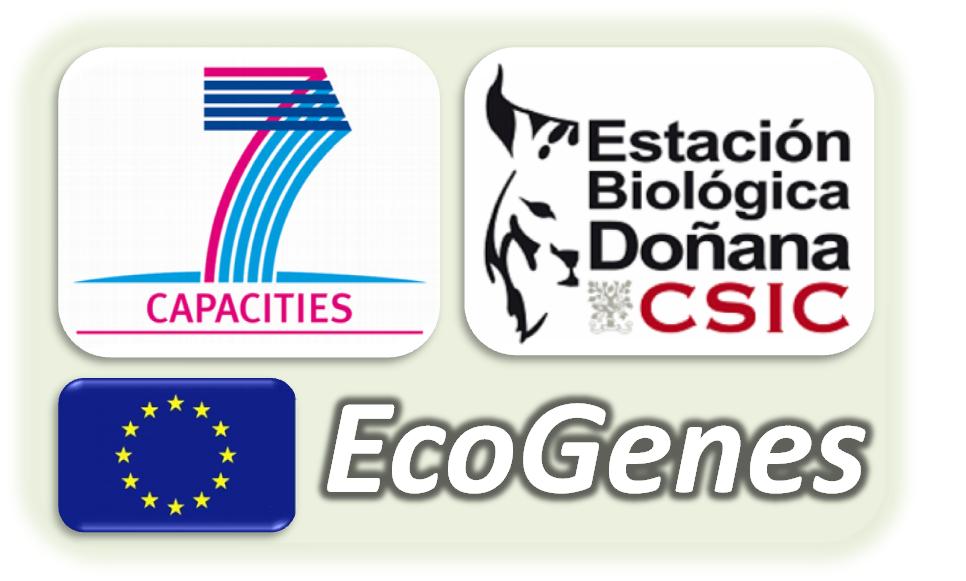Here you can find some information on the main lines of research to be promoted within the EcoGenes project. Candidates interested in applying to the open research positions can use the following project examples to get an idea of the potential for cooperation within our Institute. You can contact the leading researcher or any of the researchers within the EBD to inquire on any idea you might have that matches these three main areas.
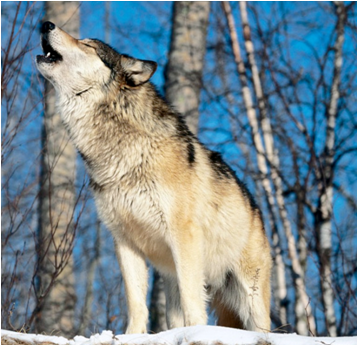
A number of markers, including immune genes likely to be subject to selection and nuclear regions less likely to be subject to selection, are being developed in order to study levels of adaptive genetic diversity in wild populations, and local selection, primarily in wolves.
contact: Jennifer Leonard
Domestication and evolution of domesticates
Both targeted and random genome amplification/ sequencing of ancient domesticates and their progenitor species (primarily domestic dogs and gray wolves) will be used to test hypotheses regarding the process of domestication, backcrossing and evolution of domesticate specific traits.
contact: Jennifer Leonard
The dog as a model of the origin of biodiversity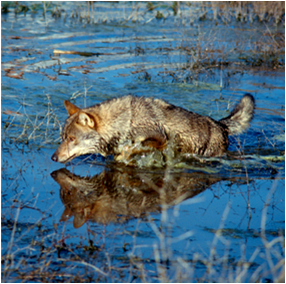
Dogs have became a model in biomedical research. They share a large number of diseases with humans and the breed structure facilitates greatly the identification of genes involved in the diseases, thus making possible the understanding of the physiological mechanisms involved. This biomedical interest has led to the development of extensive genomic resources. Since dogs are closely related to wolves, the tools and markers that have been developed to study dogs are also usable to study wolf populations. This offers the possibility of investigating the genomic structure of the ancestral and of the domestic species and track the changes associated with the domestication process. We believe that this study can provide important insights into changes occurring at the genome level at speciation.
contact: Carles VilÓ
Patterns of diversification and phenotypic divergence in Neotropical amphibians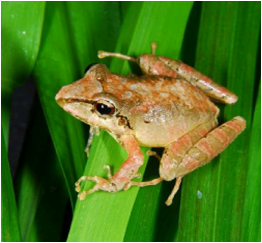
In this project we will examine the intrinsic and extrinsic drivers of diversification and phenotypic evolution in tropical regions at both a micro- and macro-evolutionary scale, by combining landscape ecology, phylogenetic comparative and genomic methods, using South and Central American amphibians as our model. We will test whether rates of phenotypic evolution increase with rates of speciation, as would be expected under an adaptive radiation scenario, we will also analyze the influence of ecological diversity, geographical and genetic distance on the degree of phenotypic disparity both among populations as well as among species. We will also analyze the influence of geographical barriers and landscape features on the genetic differentiation of populations and on the dispersal abilities of species with different ecological requirements. Finally, we will investigate genomic signatures of the speciation process and evolutionary demographic fluctuations in terms of changes in the rate of accumulation of nonsynonymous changes and on the individual patterns of molecular diversity.
contact: Carles VilÓ
An ecogenomics approach to biological invasions of two crustaceans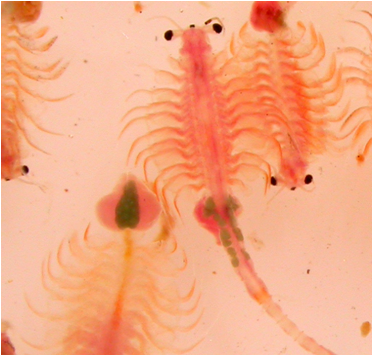
Two invasive crustaceans, the American brine shrimp Artemia franciscana and the Asiatic oriental shrimp Palaemon macrodactylus, have strong impacts on native congeners (A. salina & A. parthenogenetica; P. longirostris). Both aliens are highly competitive under extreme conditions of salinity or dissolved oxygen. We are testing whether genes involved in the adaptive response to the new, invaded environment have differential expression between native and invasive species, and whether enemy release and reduced expression of genes involved in parasite defence further enhances the fitness of invasive species. We are identifying genes involved in the stress response to environmental variables, and measuring the level of gene expression. We experimentally manipulate temperature, salinity and dissolved oxygen levels to measure the gene expression response. We quantify parasitic infection in the wild and measure the expression of genes such as the proPhenolOxidase which are involved in the response to parasitism.
contact: Ciro Rico & Andy Green
Genomics and conservation: the Iberian lynx genome
The Iberian lynx has become a notorious and dramatic case of a species at the verge of extinction. Previous genetic studies have revealed major impacts of past decline and fragmentation on current genetic patterns for neutral molecular markers, and genetic factors might be behind recent decreases in survival and reproduction. The present project aims at generating genomic information and resources for Iberian lynx genomic research, using latest generation genome sequencing technologies. The resources generated by this project will include: i) a high coverage, fully annotated version of the Iberian lynx and European lynx genome; ii) a thorough characterization of Iberian lynx transcriptome; iii) an Iberian lynx genomic library cloned in Bacterial Artificial Chromosomes (BAC); iv) a large database of genetic polymorphisms; v) a validated set of genetic markers. These resources will also be exploited by the project to generate a wealth of information on Iberian lynx genome structure and function, its evolution and on how it was impacted by the recent decline of the species.
contact: JA Godoy
Assessing patterns and dynamics of non-neutral variation in endangered species
Previous studies of Iberian lynx populations have revealed major losses of diversity in microsatellite markers and a rapid accumulation of inbreeding. It is not known, however, to what extent these processes have affected the functional diversity in the genome and is affecting the survival and reproduction of individuals. This project will evaluate how episods of decline and fragmentation affect the variation in functional genes, in situations where the diversity in neutral molecular markers has been severely reduced. The project will take adavantage of the ongoing characterization of the Iberian lynx genome to: i) molecularly characterize transcripts of inmune genes, ii) type individuals representing contemporary populations of Do˝ana, Andujar and the captive population, and historical samples spread across the historic range of species distribution, iii) compare patterns of variation for neutral markers and functional genes, and contemporary and historical patterns to assess the relative weight of drift and natural selection in recent times, and iv) assess the influence of variation in these genes and of genome-wide inbreeding on susceptibility to diseases and other components of fitness. The project addresses fundamental questions in conservation genetics and will contribute to risk assessment and to the design of effective strategies for the conservation of the Iberian lynx, the most endangered felid in the world.
contact: JA Godoy
Mechanistic controls of population dynamics and species vulnerability
We aim to reveal mechanistic links between life history, ecological, and behavioral (LEB) traits and risk of extinction using a comprehensive approach that explicitly considers a variety of wide-ranging vertebrate species, and incorporates phylogenetic relationships and main threats into the analysis. Some physiological, behavioural and population level mechanisms systematically buffer the effect of environmental stochasticity on populations. Between other things, we aim to review the level of prevalence of those mechanisms buffering environmental changes produced by global change, model the generalizations and their expected impact on population dynamics as a function of different LEB traits. Revealing functional relationships will offer unexplored ways to predict which species may be most affected by changes. Our main hypothesis is that there are general patterns in vulnerability traits and functional relationships that may be used as early indicators of risk.
contact: Eloy Revilla
Robustness of the web of life in the face of global change
Recent work on complex networks has provided a theoretical framework to unravel the structure of the Web of Life. Yet, we still know little on the implications of network architecture for the robustness of beneficial network services such as pollination of crop plants. In this proposal, I intend to move beyond current studies of global environmental change that have mainly focused on its consequences for the abundance, phenology, and geographic distributions of independent species, to embrace effects for the network of interactions among species. My strategy to tackle this overall goal is through a synthetic and interdisciplinary approach that combines theory, meta-analysis, and experiment. First, I will integrate a large dataset of ecological networks with phylogenies and life-history traits to simulate the rate and shape of loss of functional groups. Second, I will set up an experimental design to address how two important ecosystem services, pollination and control of insect pests, decline with network disassembly. Third, I will explore early-warning signals of network collapse that may predict the proximity of a critical threshold in the driving forces of global change. My approach can provide a starting point for assessing the community-wide consequences of the current biodiversity crisis.
contact: Jordi Bascompte
Migrating to the north or staying in the south:
ecophysiology of over-summering.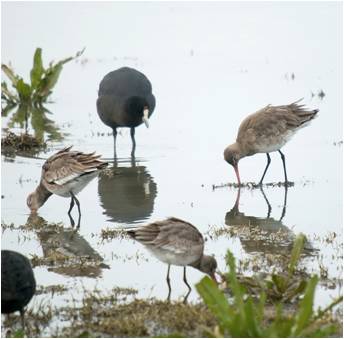
Individuals of many shorebirds may stay in their non-breeding grounds without travelling north for breeding. The frequency of oversummering has increased in the last decades in the black-tailed godwit (Limosa limosa), while breeding populations in the Netherlands are in sharp decline. Potential reasons for increased oversummering may involve climatic conditions and the increasing use of man-made habitats (rice-fields) and their interaction with individual's physiology. We aim to explore in cooperation with our partners from Gronningen University the factors related to skipping breeding and also understand the consequences of winter decisions on breeding.
contact: Jordi Figuerola
Comparative eco-physiology of range shifts
The distribution range of many species are moving to the north. Interestingly, this patterns is not so clear at the southern distribution level of the species, resulting in the paradox that many species are extending the size of their distribution range due to climate change. We aim to investigate the relationship between metabolic plasticity, immune capacity and exposure to pathogens in explaining the capacity of some species to maintain viable populations at the southern extreme of their distribution range.
contact: Jordi Figuerola
Study of trophic ecology in species of genus Calonectris at a short and long spatial and temporal scale: combination of stable isotopes, authomatic recording systems and physiological indicators
This research will combine the use of stable isotopes with automatic recording systems and stress hormonal indicators to study the trophic ecology (diet, foraging areas and feeding strategies) at a short and long term spatial and temporal scale of two closelly related species of the Genus Calonectris, breeding in the Mediterranean. Our specific goals are: (1) to determine ecological factors explaining the coexistence of these two species in some Mediterranean islands, (2) to study in detail the foraging ecology (diving activity, diving effort, success of capture), (3) to explore potential effect of different foraging effort during breeding with physiological stage and fitness of individuals, (4) to identify foraging areas of these two species along of the life cycle including wintering areas. This last inforamation will be also very valuable to studies of migratory connectivity considering other populations of the species.
contact: Manuela G. Forero
Ontogenic movements, migratory behaviour and foraging ecology of the cetacean community at the Western Mediterranean and Atlantic contiguous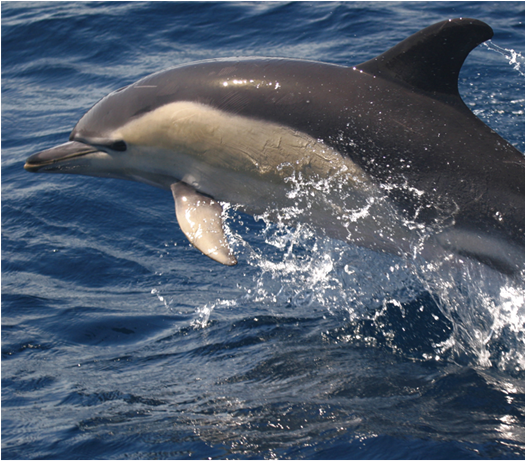
The general aim of this research will be to study the diet and foraging behaviour of the cetacean species in the study area. This community integrates ten cetaceans species: common, striped bottlenose and Rissos dolphins, long finned, beaked, sperm, fin and killer whales, and harbour porpoise. We will measure stable isotopes on skin, muscle, liver, kidney, brain, tooth and baleen plates. Analyses of samples from the scientific collection of cetaceans of our institute will allow to analyse long-term changes in the diet of these species. In addtion to the ecological questions about feeding behaviour and the evaluation of inter and intraspecific food competition and potential interaction with fisheries, we will address methodological questions on the field of stable isotope dynamic (e.g. factionation factors, etc)..
contact: Manuela G. Forero
Effects of masting in the mammal community structure of Bialowieza Forest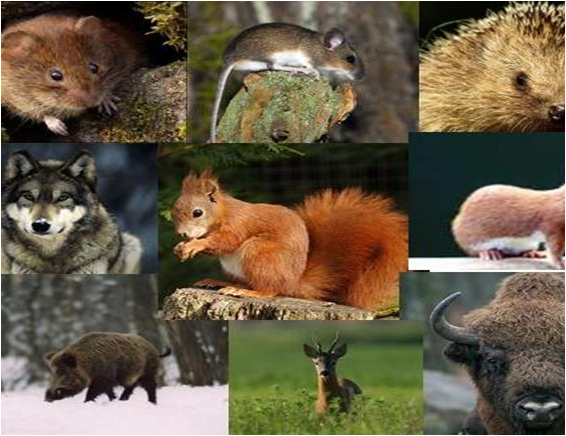
The aim of this project is to assess through time changes in the trophic structure of the animal community of Bialowieza Primeval Forest (BPF) in relation to masting events using stable isotopes analysis. The BPF is probably the only temperate deciduous forest ecosystem in Europe maintainig complex trophic weebs mediated by regular pulses of seeds. We are using stable isotope analyses to track these pulses through the trophic levels existing in the ecosystems, mainly within the herbivore community but also in upper trophic levels (depredators). Our approach, apart of the descriptive value of a well-structured vertebrate community will permit to highlight the ecological role of pulses by means of the characterization of trophic niche variation in relation to seed cycles and othet environmental variability (mainly weather oscillations).
contact: Manuela G. Forero
Migratory connectivity in birds: stable isotopes, population genetics and cultural barriers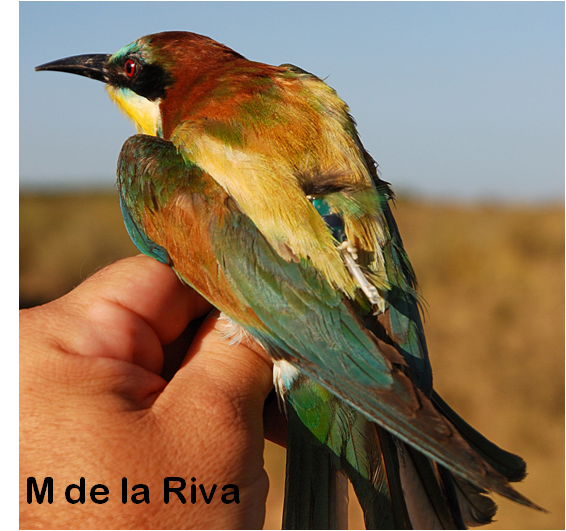
The main objective of the study is to establish the degree of connectivity in an emblematic migratory bird of the Mediterranean region, i.e. determine the connection between different areas of breeding and wintering of a migratory species. In addition, we are trying to make connections between different migrant populations by studying the genetic and cultural structure of the species. The combined use of both markers, stable isotopes and molecular markers, will allow us to see the extent of ecological isolation among different populations. In addition, we are typifying isotopically the different breeding areas sampled, as well as the possible wintering areas that may be useful in future studies focusing on the migration of other species. Complementarily, we will also determine similarities in the vocal communication among different populations in order to establish possible cultural isolations throughout a vast area in the Eurasian region.
contact: Manuela G. Forero
Genomics
Local adaptation in wild populations
A number of markers, including immune genes likely to be subject to selection and nuclear regions less likely to be subject to selection, are being developed in order to study levels of adaptive genetic diversity in wild populations, and local selection, primarily in wolves.
contact: Jennifer Leonard
Domestication and evolution of domesticates

Both targeted and random genome amplification/ sequencing of ancient domesticates and their progenitor species (primarily domestic dogs and gray wolves) will be used to test hypotheses regarding the process of domestication, backcrossing and evolution of domesticate specific traits.
contact: Jennifer Leonard
The dog as a model of the origin of biodiversity

Dogs have became a model in biomedical research. They share a large number of diseases with humans and the breed structure facilitates greatly the identification of genes involved in the diseases, thus making possible the understanding of the physiological mechanisms involved. This biomedical interest has led to the development of extensive genomic resources. Since dogs are closely related to wolves, the tools and markers that have been developed to study dogs are also usable to study wolf populations. This offers the possibility of investigating the genomic structure of the ancestral and of the domestic species and track the changes associated with the domestication process. We believe that this study can provide important insights into changes occurring at the genome level at speciation.
contact: Carles VilÓ
Patterns of diversification and phenotypic divergence in Neotropical amphibians

In this project we will examine the intrinsic and extrinsic drivers of diversification and phenotypic evolution in tropical regions at both a micro- and macro-evolutionary scale, by combining landscape ecology, phylogenetic comparative and genomic methods, using South and Central American amphibians as our model. We will test whether rates of phenotypic evolution increase with rates of speciation, as would be expected under an adaptive radiation scenario, we will also analyze the influence of ecological diversity, geographical and genetic distance on the degree of phenotypic disparity both among populations as well as among species. We will also analyze the influence of geographical barriers and landscape features on the genetic differentiation of populations and on the dispersal abilities of species with different ecological requirements. Finally, we will investigate genomic signatures of the speciation process and evolutionary demographic fluctuations in terms of changes in the rate of accumulation of nonsynonymous changes and on the individual patterns of molecular diversity.
contact: Carles VilÓ
An ecogenomics approach to biological invasions of two crustaceans

Two invasive crustaceans, the American brine shrimp Artemia franciscana and the Asiatic oriental shrimp Palaemon macrodactylus, have strong impacts on native congeners (A. salina & A. parthenogenetica; P. longirostris). Both aliens are highly competitive under extreme conditions of salinity or dissolved oxygen. We are testing whether genes involved in the adaptive response to the new, invaded environment have differential expression between native and invasive species, and whether enemy release and reduced expression of genes involved in parasite defence further enhances the fitness of invasive species. We are identifying genes involved in the stress response to environmental variables, and measuring the level of gene expression. We experimentally manipulate temperature, salinity and dissolved oxygen levels to measure the gene expression response. We quantify parasitic infection in the wild and measure the expression of genes such as the proPhenolOxidase which are involved in the response to parasitism.
contact: Ciro Rico & Andy Green
Genomics and conservation: the Iberian lynx genome

The Iberian lynx has become a notorious and dramatic case of a species at the verge of extinction. Previous genetic studies have revealed major impacts of past decline and fragmentation on current genetic patterns for neutral molecular markers, and genetic factors might be behind recent decreases in survival and reproduction. The present project aims at generating genomic information and resources for Iberian lynx genomic research, using latest generation genome sequencing technologies. The resources generated by this project will include: i) a high coverage, fully annotated version of the Iberian lynx and European lynx genome; ii) a thorough characterization of Iberian lynx transcriptome; iii) an Iberian lynx genomic library cloned in Bacterial Artificial Chromosomes (BAC); iv) a large database of genetic polymorphisms; v) a validated set of genetic markers. These resources will also be exploited by the project to generate a wealth of information on Iberian lynx genome structure and function, its evolution and on how it was impacted by the recent decline of the species.
contact: JA Godoy
Assessing patterns and dynamics of non-neutral variation in endangered species

Previous studies of Iberian lynx populations have revealed major losses of diversity in microsatellite markers and a rapid accumulation of inbreeding. It is not known, however, to what extent these processes have affected the functional diversity in the genome and is affecting the survival and reproduction of individuals. This project will evaluate how episods of decline and fragmentation affect the variation in functional genes, in situations where the diversity in neutral molecular markers has been severely reduced. The project will take adavantage of the ongoing characterization of the Iberian lynx genome to: i) molecularly characterize transcripts of inmune genes, ii) type individuals representing contemporary populations of Do˝ana, Andujar and the captive population, and historical samples spread across the historic range of species distribution, iii) compare patterns of variation for neutral markers and functional genes, and contemporary and historical patterns to assess the relative weight of drift and natural selection in recent times, and iv) assess the influence of variation in these genes and of genome-wide inbreeding on susceptibility to diseases and other components of fitness. The project addresses fundamental questions in conservation genetics and will contribute to risk assessment and to the design of effective strategies for the conservation of the Iberian lynx, the most endangered felid in the world.
contact: JA Godoy
Ecological Modelling
Mechanistic controls of population dynamics and species vulnerability

We aim to reveal mechanistic links between life history, ecological, and behavioral (LEB) traits and risk of extinction using a comprehensive approach that explicitly considers a variety of wide-ranging vertebrate species, and incorporates phylogenetic relationships and main threats into the analysis. Some physiological, behavioural and population level mechanisms systematically buffer the effect of environmental stochasticity on populations. Between other things, we aim to review the level of prevalence of those mechanisms buffering environmental changes produced by global change, model the generalizations and their expected impact on population dynamics as a function of different LEB traits. Revealing functional relationships will offer unexplored ways to predict which species may be most affected by changes. Our main hypothesis is that there are general patterns in vulnerability traits and functional relationships that may be used as early indicators of risk.
contact: Eloy Revilla
Robustness of the web of life in the face of global change

Recent work on complex networks has provided a theoretical framework to unravel the structure of the Web of Life. Yet, we still know little on the implications of network architecture for the robustness of beneficial network services such as pollination of crop plants. In this proposal, I intend to move beyond current studies of global environmental change that have mainly focused on its consequences for the abundance, phenology, and geographic distributions of independent species, to embrace effects for the network of interactions among species. My strategy to tackle this overall goal is through a synthetic and interdisciplinary approach that combines theory, meta-analysis, and experiment. First, I will integrate a large dataset of ecological networks with phylogenies and life-history traits to simulate the rate and shape of loss of functional groups. Second, I will set up an experimental design to address how two important ecosystem services, pollination and control of insect pests, decline with network disassembly. Third, I will explore early-warning signals of network collapse that may predict the proximity of a critical threshold in the driving forces of global change. My approach can provide a starting point for assessing the community-wide consequences of the current biodiversity crisis.
contact: Jordi Bascompte
Ecophysiology
Migrating to the north or staying in the south:
ecophysiology of over-summering.

Individuals of many shorebirds may stay in their non-breeding grounds without travelling north for breeding. The frequency of oversummering has increased in the last decades in the black-tailed godwit (Limosa limosa), while breeding populations in the Netherlands are in sharp decline. Potential reasons for increased oversummering may involve climatic conditions and the increasing use of man-made habitats (rice-fields) and their interaction with individual's physiology. We aim to explore in cooperation with our partners from Gronningen University the factors related to skipping breeding and also understand the consequences of winter decisions on breeding.
contact: Jordi Figuerola
Comparative eco-physiology of range shifts

The distribution range of many species are moving to the north. Interestingly, this patterns is not so clear at the southern distribution level of the species, resulting in the paradox that many species are extending the size of their distribution range due to climate change. We aim to investigate the relationship between metabolic plasticity, immune capacity and exposure to pathogens in explaining the capacity of some species to maintain viable populations at the southern extreme of their distribution range.
contact: Jordi Figuerola
Study of trophic ecology in species of genus Calonectris at a short and long spatial and temporal scale: combination of stable isotopes, authomatic recording systems and physiological indicators

This research will combine the use of stable isotopes with automatic recording systems and stress hormonal indicators to study the trophic ecology (diet, foraging areas and feeding strategies) at a short and long term spatial and temporal scale of two closelly related species of the Genus Calonectris, breeding in the Mediterranean. Our specific goals are: (1) to determine ecological factors explaining the coexistence of these two species in some Mediterranean islands, (2) to study in detail the foraging ecology (diving activity, diving effort, success of capture), (3) to explore potential effect of different foraging effort during breeding with physiological stage and fitness of individuals, (4) to identify foraging areas of these two species along of the life cycle including wintering areas. This last inforamation will be also very valuable to studies of migratory connectivity considering other populations of the species.
contact: Manuela G. Forero
Ontogenic movements, migratory behaviour and foraging ecology of the cetacean community at the Western Mediterranean and Atlantic contiguous

The general aim of this research will be to study the diet and foraging behaviour of the cetacean species in the study area. This community integrates ten cetaceans species: common, striped bottlenose and Rissos dolphins, long finned, beaked, sperm, fin and killer whales, and harbour porpoise. We will measure stable isotopes on skin, muscle, liver, kidney, brain, tooth and baleen plates. Analyses of samples from the scientific collection of cetaceans of our institute will allow to analyse long-term changes in the diet of these species. In addtion to the ecological questions about feeding behaviour and the evaluation of inter and intraspecific food competition and potential interaction with fisheries, we will address methodological questions on the field of stable isotope dynamic (e.g. factionation factors, etc)..
contact: Manuela G. Forero
Effects of masting in the mammal community structure of Bialowieza Forest

The aim of this project is to assess through time changes in the trophic structure of the animal community of Bialowieza Primeval Forest (BPF) in relation to masting events using stable isotopes analysis. The BPF is probably the only temperate deciduous forest ecosystem in Europe maintainig complex trophic weebs mediated by regular pulses of seeds. We are using stable isotope analyses to track these pulses through the trophic levels existing in the ecosystems, mainly within the herbivore community but also in upper trophic levels (depredators). Our approach, apart of the descriptive value of a well-structured vertebrate community will permit to highlight the ecological role of pulses by means of the characterization of trophic niche variation in relation to seed cycles and othet environmental variability (mainly weather oscillations).
contact: Manuela G. Forero
Migratory connectivity in birds: stable isotopes, population genetics and cultural barriers

The main objective of the study is to establish the degree of connectivity in an emblematic migratory bird of the Mediterranean region, i.e. determine the connection between different areas of breeding and wintering of a migratory species. In addition, we are trying to make connections between different migrant populations by studying the genetic and cultural structure of the species. The combined use of both markers, stable isotopes and molecular markers, will allow us to see the extent of ecological isolation among different populations. In addition, we are typifying isotopically the different breeding areas sampled, as well as the possible wintering areas that may be useful in future studies focusing on the migration of other species. Complementarily, we will also determine similarities in the vocal communication among different populations in order to establish possible cultural isolations throughout a vast area in the Eurasian region.
contact: Manuela G. Forero
